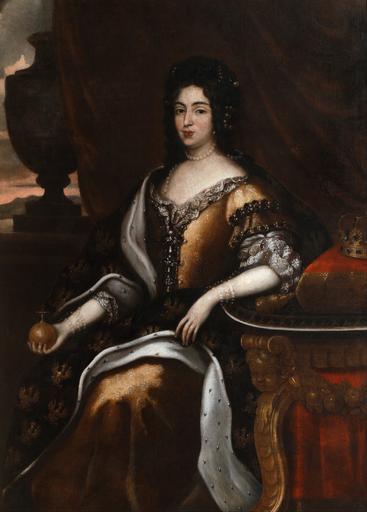MAKE A MEME
View Large Image

| View Original: | Jan_Tricius_-_Portrait_of_Maria_Casimire_-_Google_Art_Project.jpg (2152x3001) | |||
| Download: | Original | Medium | Small | Thumb |
| Courtesy of: | commons.wikimedia.org | More Like This | ||
| Keywords: Jan Tricius - Portrait of Maria Casimire - Google Art Project.jpg Portret Marii Kazimiery From 1913 the portrait belonged to the collection of the Tyszkiewicz family in Czerwony Dw√≥r near Kaunas; afterwards it was transported to Warsaw and after the 2nd World War in 1949 donated by Benedykt Tyszkiewicz to the Wilan√≥w gallery Maria Kazimiera de la Grange d ôArquien known as MarysieŇĄka 1641-1716 the queen of Poland Born in Nevers and from childhood in the entourage of Maria Gonzaga de Nevers later Queen Ludwika Maria of Poland who brought her over to Poland in 1652 or 1653 Her marriage to Jan Zamoyski the ordynat the principal heir of an ordynacja - landed property in fideicommis of ZamoŇõńá 1658 was an important element of the queen ôs political plans which involved creating a political faction In 1659 Maria Kazimiera established closer contacts with Jan Sobieski; she was requested by the queen to win over her husband and Sobieski for plans of a vivente rege election In 1661 Maria Kazimiera and Sobieski took vows of love at a Carmelite church During the following years they considered upon several occasions settling down permanently in France For a certain time Maria Kazimiera was less connected with court politics but in 1665 she became engaged in the realisation of the queen ôs projects and urged Sobieski to accept the rank of marshal Several months after the death of Zamoyski Maria Kazimiera and Jan Sobieski married July 1665 After the death of Queen Ludwig Maria in 1667 MarysieŇĄka left for Paris where she gave birth to a son Jakub She counted on bringing over her husband and living in France but Sobieski ôs growing popularity in Poland connected with his military accomplishments and his unwillingness to leave the country put an end to those plans MarysieŇĄka treated the election of MichaŇā Korybut WiŇõniowiecki in 1669 as a defeat since she was a supporter of the French candidate; hence she joined efforts aiming at the dethronement of the king The military triumphs of Sobieski and the death of MichaŇā Korybut mobilised Maria Kazimiera to pursue lively endeavours aimed at a coronation of her husband His election in 1674 was her personal success It is believed that MarysieŇĄka ôs impact upon Hetman Jan was much greater than when he became king She attempted to win for herself and her family as many material benefits and titles as possible including a cardinal ôs title for her father from the pope and the title of a duke from Louis XIV Striving to guarantee the throne for Prince Jakub she initially decided to support the pro-Hamburg option and when the project of marrying him to Ludwika Karolina RadziwiŇāŇā the marchioness of Brandenburg failed MarysieŇĄka turned towards Versailles This was the reason for the clash with her oldest son in 1691 married to the empress ôs sister At the end of the Jan III ôs life MarysieŇĄka considered the possibility of re-marrying and her candidate was Great Hetman of the Crown StanisŇāaw JabŇāonowski After her husband ôs death in 1696 and despite controversies with Jakub she loyally backed the latter ôs candidature and in the face of failure opted for Augustus II Maria Kazimiera did not support artists nor became involved in expanding her residences Her part played in the construction of Marywil ď a trade centre and a residence ď stemmed more from economic impulses than artistic ones while her participation in the construction of Wilan√≥w was extremely limited In 1699 she left for Rome where she was favourably received Her relations with the dignitaries of the Roman See however slowly deteriorated as did her material situation and in 1714 she moved to Blois France where she died In 1734 MarysieŇĄka was buried together with Jan III in the cathedral crypt on Wawel Hill In both marriages she gave birth to 13 children but only four Sobieskis lived on to reach adulthood Jakub Aleksander Konstanty and Teresa Kunegunda oil on canvas special url_id cAH0TxtfIKxvOw PD-old-100-1923 1698 Google Art Project works in The Wilan√≥w Palace Museum Paintings by Jan Tricius in the Wilan√≥w Palace Google Art Project works by Jan Tricius Ermine clothing in art Portraits of Maria Kazimiera Sobieska | ||||